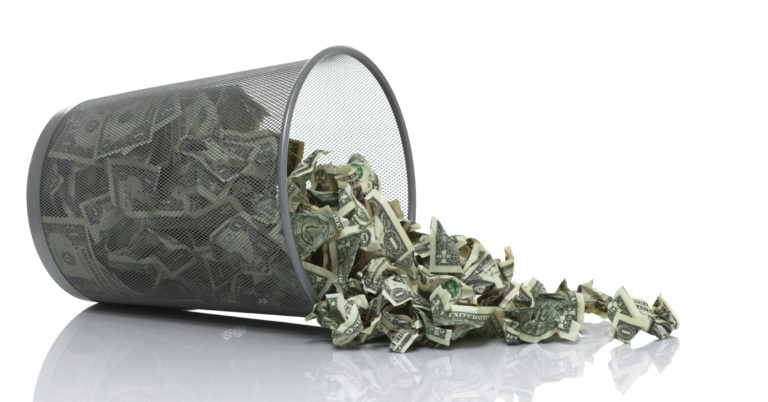
Tax revenue increased; the federal deficit ballooned. Washington, we have a spending problem.
According a Treasury Department report published last week, taxes paid by businesses increased 12%, to $230 billion this year. Overall, federal revenue increased by 3.8% from last year.
Meanwhile, the deficit ballooned by 26.4%, from $779 billion to $984 billion. We’re right on the edge of digging ourselves into even greater debt at a rate of $1 trillion per year.
So, what happened? If we took in more money, how did our deficit get so much larger?
Washington, we have a spending problem.
Myth: Busted
Critics of the Tax Cuts and Jobs Act of 2017 point to tax cuts as the culprit. They claim that cutting taxes increased the deficit, putting us on a much faster debt trajectory.
That narrative doesn’t accurately describe what’s really happening. From FY2017 to FY2019, federal revenue taken in by the Treasury Department grew, albeit slightly, even with the tax cuts.
Spending grew, as well — but far faster. From 2017 to 2019, spending shot up 12%, a $465 billion increase.
That should tell critics of tax reform something significant about federal spending. The treasury can take in more money from taxpayers and still widen the deficit by more than $200 billion in a single year.
Take a closer look at how Washington spends money, and you’ll understand how.
What’s the deal with spending?
Every category of spending grew by at least 5% from FY2018 to FY2019. Spending on Medicare, for example, grew 10.6% from last year.
Defense spending increased, too, by 8.8%.
The government is also spending nearly $400 billion on interest payments, alone. Interest on the debt increased nearly 16% within just one year. Of course, we can’t simply ignore these payments. But spending more on other programs each year only ensures that our next interest payment will be even higher.
What’s more, if interest rates rise — even a little — our national debt would skyrocket.
For example, if interest rates were to increase by just one percentage point, our total debt would hit $100 trillion by 2046.
This is a spending problem, not a revenue problem
Congress needs to act on this — fast.
We know that while the treasury is taking in more taxpayer money each year, our deficit is still increasing by hundreds of billions of dollars.
Luckily for lawmakers, they don’t need to pitch a tax hike to taxpayers. Even if such a measure passed, it likely wouldn’t make much of a dent in our deficit.
That said, lawmakers will need to cut spending. Washington has ignored the pressing need to make even modest reforms to spending programs for too long. If something isn’t done soon, we’ll be facing a fiscal crisis.
Read Americans for Prosperity’s spending report to learn more about the government’s overspending problem — and what reforms Washington can make to fix it.

